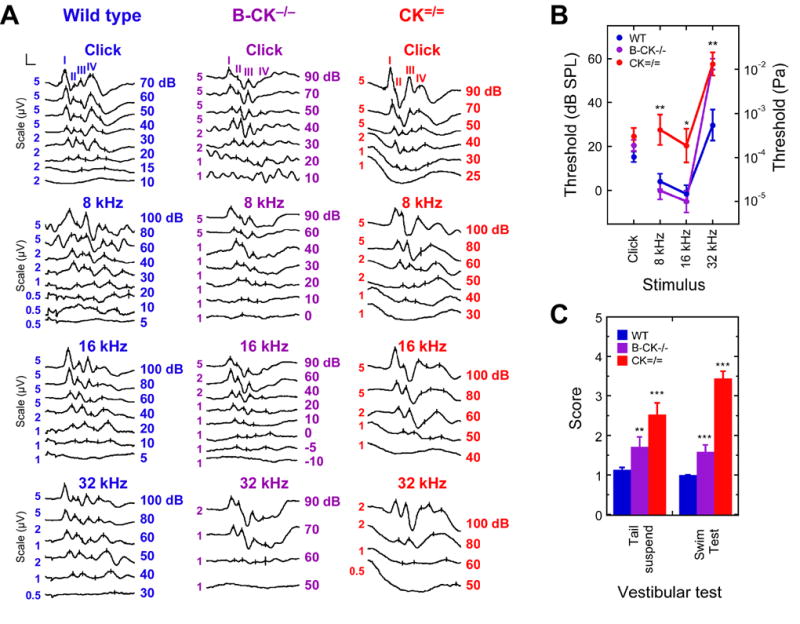Figure 6. Auditory brainstem responses and vestibular behavior in creatine kinase knockout mice.

A: Typical ABRs evoked with a click stimulus (top) and with tone bursts of 8, 16 and 32 kHz (bottom) for WT, B-CK−/−, and CK=/= mice. ABRs are shown at different descending stimulus intensity levels in dB SPL. Reproducible ABRs at lower stimulation intensities in response to 32 kHz tone-bursts stimuli were not elicited from B-CK−/− and CK=/= mice; CK=/= mice also showed higher thresholds in response to 8 kHz and 16 kHz tone-burst stimuli. The vertical axis scale was adjusted for readibility at higher stimulation levels; scale bar in upper left signifies 1.5 ms and the appropriate vertical scale (indicated to left of each trace).
B: Mean auditory brainstem thresholds. CK=/= mice showed significantly elevated hearing thresholds compared to B-CK−/− and WT mice for 8 and 16 kHz (ANOVA, **p <0.01 and *p <0.05, respectively). For the 32 kHz tone burst, both B-CK−/− and CK=/= mice showed significantly elevated auditory thresholds compared to WT (ANOVA, **p < 0.01). Significance in (B) and (C) is indicated by: *, p<0.05; **, p <0.01; and ***, p<0.001.
C: Vestibular dysfunction in creatine kinase deficient mice. Applying the tail suspension and swim tests, each with scores ranging from 1 (normal vestibular function) to 5 (severe vestibular dysfunction), indicated normal vestibular function for WT mice (n=30). B-CK−/− single knockout mice (n=17) showed a mild vestibular dysfunction; dysfunction in CK=/= double knockout mice (n=17) was more severe.
